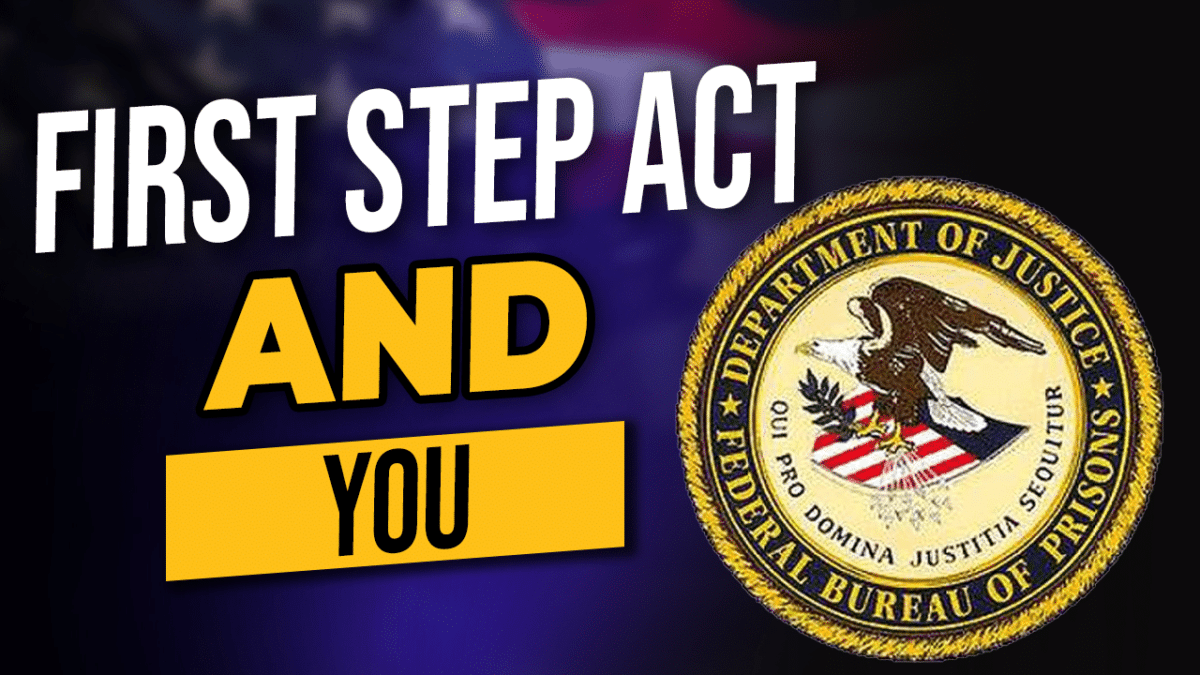In recent years there has been a trend toward exempting groups of people from the benefits of sentencing reforms. However, doing so bakes a degree of injustice into our justice system.
It is helpful to understand the historical context for this trend. Prior to the Sentencing Reform Act of 1984 (which created the U.S. Sentencing Commission and abolished parole), and the draconian “War on Drugs” bills that followed, all people were treated equally (from a sentencing perspective) once imprisoned. The length of sentence was the punishment, with the nature of the crime, the person’s history, etc. taken into consideration when the judge imposed the penalty. At that time, everyone had an equal opportunity to earn early release due to good behavior and rehabilitation (by statute or via good-time credits). Most individuals were eligible for parole consideration after completion of one-third of their sentences. The average person with a life sentence was eligible to petition for parole after 10 years, and most lifers received mandatory parole after 30 years (with exceptions being high-profile, “sensationalized” individuals like Mutulu Shakur).
How do we decide that some crimes are ‘worse’ than others?
Today, the use of “carve outs” that treat people differently after incarceration is on the rise, and isn’t getting the attention it deserves in the advocacy world. The most common used carve-out is the exemption of individuals who were charged with violent crimes or sex-related offenses. The white-collar lobby has some culpability in encouraging these carve-outs, by spreading a false narrative in which fraud, theft and graft are crimes whose perpetrators are more capable of rehabilitation and worthier of release.
These carve-outs are now enshrined in the psyche of the justice community, as reflected in the First Step Act (FSA) of 2018. Advocates should insist that this be fixed in any “second step” legislation. Incarceration is designed for rehabilitation as well as incapacitation, and every person who makes strides toward personal growth and change should benefit from early release into the community offered via FSA credits.
Consider punishment from a fairness and deterrence perspective: A young adult in an urban area commits one act labeled as violent (there are many degrees!) and must serve 85% of his federal prison term no matter what. Yet a person who commits repetitive white-collar crimes or a first-time offender who causes losses to other in the multi-millions can be back in the community after serving just over 35% of their terms due to FSA eligibility. This is discrimination, and some people will calculate this expected leniency into their future behavior, which may perversely result in an increase such “nonviolent” crimes. It’s difficult to understand why this disparity is not getting more attention.
Let’s go a step farther with FSA pre-release credits. The people who need programming and transitional placement in the community (halfway houses) the most – individuals still in high-security prisons, for example – are the ones who are not getting it because either they are not eligible for FSA incentives or are placed on the bottom of programming waiting lists, which give preference to those who are eligible or are closer to release. But how does that promote public safety in the long term? The medium- and high-risk people ineligible for the time credits are competing for halfway house beds with people who simply don’t need the transition. Behaviors that deviate from social norms are complicated issues, involving many criminogenic factors. Aside from the most egregious crimes, we should not automatically label white collar offenses as less harmful to society than so-called violent offenses or offenders. This violent/nonviolent narrative must end when considering legislation.
A prisoner’s perspective
A More Than Our Crimes member at FCI Atlanta, Christopher Cobb, wrote about this issue recently on the MTOC blog. Below is an excerpt:
I believe that society should prioritize the rehabilitation of people who committed what is often considered the “worst” offenses. The broader community is safer when more people take evidence-based recidivism reduction (EBRR) programs. Incentives are needed to push more people into these programs, because most individuals in prison – an emasculating experience – need “prompting” to begin the hard work of change.” Why? It takes a while, after entering prison, to recognize and accept the harm they caused and their responsibility for it. And yes, offering incentives often means that many people initially take programs for the wrong reasons – to get out earlier (not necessarily because they know they need to change).
However, the beauty of “evidence-based recidivism reduction” is that almost all these individuals change their way of thinking as they progress through the programs. For instance, I originally enrolled in a paralegal correspondence course to find a way out of my situation. And it gave me that, along with the ability to help others obtain shorter sentences. But it also helped me understand where the government is coming from when it outlaws something, and how the history of the body of law has shaped our current justice system. Now I understand better how to bridge the gap between government agents and their viewpoints and those of us in the carceral situation.
Other inmates who have taken cognitive-development and criminal-thinking courses (BOP-offered EBRRs), and participated in programs like Threshold and RDAP (Residential Drug Abuse Program) have had similar experiences. And here is the kicker: Not one of those individuals actually took these courses to improve themselves; they signed up to get time off. The self-improvement was unexpected and occurred sort of as a byproduct. I guess you could say that instead of “gaming the system,” the system gamed them (but in a good way).
There’s another reason why these individuals sign up: to ease the boredom that leads to anger and violence. When people are in prison (especially when staff can lock the cell doors), they spend a lot of time in forced idleness. For instance, here at FCI Atlanta, we spend an average of 13 hours a day locked in our cells. (Yes, we have tablets, but other than music, we can only download mostly old, childish movies.)
And when we are let out, if you’re not working or in classes, you spend the majority of the time watching TV. TV isn’t a bad thing (everyone needs time to chill), but when that is all you do, it doesn’t really contribute to reduction of recidivism.
What does all that idle time lead to? Many guys turn to drugs. And drug overdoses are a clear health and safety issue.
I was not immune to this “disease.” For the first four or so years of my sentence, looking at the next 15 years in prison, I was angry. I spent most of my time simply playing cards. My day was TV, cards, TV, bed, then do it all again.
That is why I think it is so important to get “the worst” offenders into these classes. And the strongest possible incentive is earlier release from the suffering that prison imposes.
The result: The prison itself is safer and the population is more manageable. It is, therefore, a win-win when all prisoners are incentivized to participate in programs designed to reduce the likelihood of re-offense.


